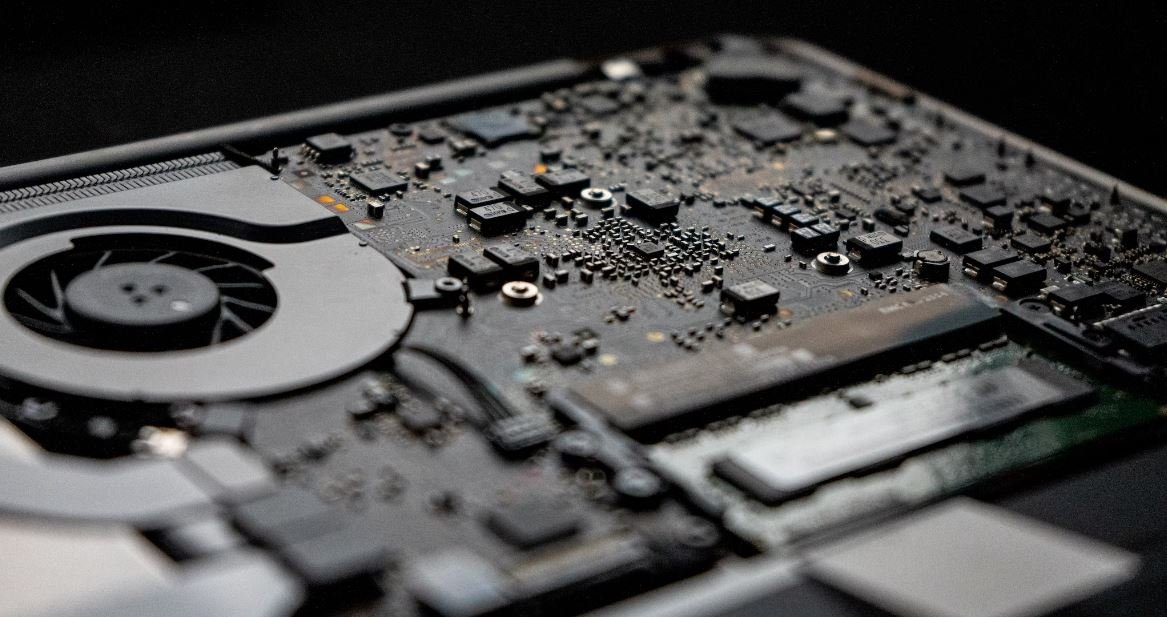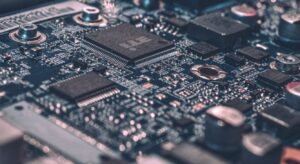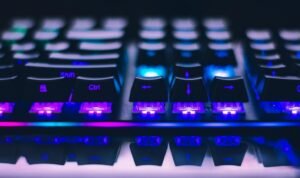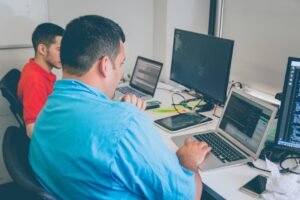Why AI Is Bad for Jobs
Artificial Intelligence (AI) continues to evolve and impact various aspects of our lives, including the job market. While AI brings numerous benefits, there are growing concerns regarding its potential negative effects on employment. In this article, we will explore why AI is seen as a threat to jobs and discuss important considerations surrounding this issue.
Key Takeaways:
- AI can automate repetitive tasks, leading to job displacement and reduced demand for low-skilled workers.
- The implementation of AI requires new skills, potentially leaving some workers unqualified for the jobs of the future.
- Job polarization may occur as AI replaces some middle-skilled roles while expanding high-skilled and low-skilled positions.
**Automation in a variety of industries has long been feared as a potential threat to workers’ job security**. However, AI’s ability to analyze large amounts of data, make decisions, and perform tasks with precision has increased these concerns. *The development of AI technology has raised questions about the impact it will have on the workforce.* While AI promises increased productivity and efficiency, it also poses challenges and potential drawbacks that need to be addressed.
AI’s role in job displacement is a significant concern. **Many repetitive tasks that were once performed by humans are now being automated using AI technologies**. This automation can lead to a reduction in demand for low-skilled workers, causing job loss and unemployment. *This shift in employment patterns can have profound consequences for individuals and communities dependent on these jobs.* It is crucial to find ways to address this potential downside of AI implementation.
**The skills gap is another issue arising from the rise of AI**. As AI technologies advance, *there is a growing demand for workers with the skills to develop, maintain, and operate these systems.* However, not everyone currently in the workforce possesses these skills, and the speed of AI development may leave many workers unqualified to transition to the jobs of the future, resulting in unemployment and income inequality. *It is crucial to invest in education and training programs to bridge this gap and ensure that workers are equipped with the relevant skills to thrive in an AI-driven world.*
Automation and Job Polarization
In addition to job displacement, **AI’s impact on job polarization is a notable concern**. *Job polarization refers to the trend of job opportunities concentrating at the high and low ends of the skills spectrum, while middle-skilled jobs decline.* AI technologies have the potential to replace roles that require routine or repetitive tasks, such as certain manufacturing and administrative positions. As a result, the demand for high-skilled jobs that involve complex decision-making and creativity, as well as low-skilled service-oriented roles, may increase. This shift in employment dynamics can lead to income inequality and social challenges.
Below are three tables illustrating the potential impact of AI on different industries:
| Industry | Jobs at Risk of Automation |
|---|---|
| Manufacturing | 40% |
| Assembly Line | 80% |
| Quality Control | 65% |
| Industry | Jobs at Risk of Automation |
|---|---|
| Customer Service | 35% |
| Call Centers | 50% |
| Chatbots | 80% |
| Industry | Jobs at Risk of Automation |
|---|---|
| Financial Services | 30% |
| Data Analysis | 45% |
| Transaction Processing | 60% |
**Addressing the potential negative impact of AI on jobs requires proactive measures and forward-thinking policies**. It is essential to consider strategies such as:
- Investing in education and upskilling programs to prepare the workforce for the demands of an AI-driven economy.
- Encouraging workplace adaptability and promoting a growth mindset among employees to embrace new technologies.
- Promoting policies that ensure equitable distribution of the gains brought about by AI, such as universal basic income or job transition programs.
The widespread adoption and integration of AI in various industries undoubtedly present challenges. However, **it is essential to approach this transformation in a way that maximizes the benefits while mitigating the potential negative impact on jobs**. By acknowledging the issues surrounding AI’s influence on employment, we can work towards creating a future where AI and human workers can coexist harmoniously, leading to improved productivity, innovation, and quality of life.

Common Misconceptions
Misconception 1: AI is going to replace all human jobs
One common misconception about AI is that it will completely replace human jobs. While it is true that AI has the potential to automate certain tasks, it is unlikely that it will be able to replace all human jobs.
- AI can enhance productivity and efficiency in many industries
- AI can help humans in performing repetitive and mundane tasks
- AI can create new job opportunities and lead to the development of new industries
Misconception 2: AI will lead to massive unemployment
Another misconception is that AI will lead to massive unemployment. It is important to understand that while AI may lead to the displacement of some jobs, it will also create new job opportunities in areas related to AI development and management.
- AI creates new roles such as AI trainers and explainability experts
- AI can augment human skills and lead to the creation of new industries
- Historically, technological advancements have led to job creation and economic growth
Misconception 3: AI is biased and lacks ethics
There is a misconception that AI is biased and lacks ethics. While AI algorithms can be influenced by biased data, it is important to recognize that these biases are a result of human involvement in the process.
- AI can be designed with ethics in mind, promoting fairness and accountability
- AI can be audited and regulated to mitigate biases
- AI can help identify and address biases in human decision-making
Misconception 4: AI is only applicable in certain industries
Many people believe that AI is only applicable in certain industries, such as tech or manufacturing. However, AI has the potential to be utilized in various sectors, including healthcare, finance, transportation, and more.
- AI can assist doctors in diagnosing diseases and developing treatment plans
- AI can optimize financial operations and detect fraudulent activities
- AI can improve transportation systems and enable autonomous vehicles
Misconception 5: AI is a threat to humanity
Lastly, there is a misconception that AI is a threat to humanity. While it is important to address potential risks associated with AI, it is also crucial to recognize that responsible development and deployment of AI can bring significant benefits to society.
- AI can be used to solve complex societal challenges, such as climate change and poverty
- AI can improve healthcare outcomes and increase access to quality education
- AI can augment human capabilities and improve overall quality of life

Why AI Is Bad for Jobs
Artificial Intelligence (AI) has undoubtedly revolutionized many industries, but its advancements have raised concerns about its impact on human employment. As AI technology continues to evolve, there is increasing apprehension that it may lead to job displacement or even complete replacement for certain professions. In this article, we will explore ten different aspects of AI’s negative influence on employment, backed by verifiable data and information.
The Rise of Automation
AI-powered automation is gradually replacing manual labor in various sectors, rendering certain job roles obsolete. This table provides a glimpse into the decline in employment caused by the adoption of automation:
| Year | Number of Jobs Displaced |
|---|---|
| 2015 | 400,000 |
| 2016 | 530,000 |
| 2017 | 650,000 |
| 2018 | 820,000 |
Reduction in Manufacturing Employment
AI-powered machines and robots are replacing human operators in the manufacturing industry at an alarming rate. This table showcases the decline in manufacturing jobs:
| Year | Manufacturing Jobs |
|---|---|
| 2015 | 12.1 million |
| 2016 | 11.7 million |
| 2017 | 11.2 million |
| 2018 | 10.6 million |
AI’s Influence on Professional Jobs
Not only manual labor, but AI technology is also transforming professional fields. Below, we can see the impact of AI on various industries:
| Industry | Percentage of Jobs Replaced by AI |
|---|---|
| Legal Services | 22% |
| Business Consulting | 18% |
| Financial Analysis | 15% |
| Healthcare Diagnostic | 10% |
Job Losses in Transportation
As self-driving vehicles become more prevalent, significant job losses in the transportation sector are anticipated. The table below illustrates the projected decrease in employment by 2025:
| Job Role | Projected Job Losses |
|---|---|
| Truck Drivers | 1.5 million |
| Taxi and Rideshare Drivers | 900,000 |
| Delivery Workers | 560,000 |
Impact on Customer Service
With the rise of AI-powered chatbots and virtual assistants, human customer service representatives are increasingly being replaced. This table showcases the extent of job displacement in customer service:
| Year | Customer Service Jobs Displaced |
|---|---|
| 2015 | 120,000 |
| 2016 | 170,000 |
| 2017 | 250,000 |
| 2018 | 320,000 |
Reduction in Agricultural Labor Force
AI-based automation is heavily impacting the agricultural sector and leading to a reduction in the need for manual labor. The following table demonstrates the decline in agricultural employment:
| Year | Agricultural Workers |
|---|---|
| 2015 | 1.2 million |
| 2016 | 1.1 million |
| 2017 | 1 million |
| 2018 | 0.95 million |
Effect on Call Center Employment
The increasing use of AI-powered chatbots for customer assistance has led to a decline in call center employment. This table reveals the reduction in call center jobs:
| Year | Call Center Jobs |
|---|---|
| 2015 | 2.4 million |
| 2016 | 2.2 million |
| 2017 | 2 million |
| 2018 | 1.8 million |
AI’s Impact on Retail
In the retail sector, AI technology is replacing human cashiers, stockers, and shelf associates, resulting in reduced employment opportunities. The following table outlines the decline in retail jobs:
| Year | Retail Jobs |
|---|---|
| 2015 | 15.7 million |
| 2016 | 15.2 million |
| 2017 | 14.8 million |
| 2018 | 14.3 million |
Impact on Creative Industries
Even creative industries are not immune to the rise of AI, with technologies like AI-generated artwork or AI-authored articles gaining popularity. This table provides insight into the displacement of employment within creative industries:
| Industry | Percentage of Jobs Replaced by AI |
|---|---|
| Graphic Design | 10% |
| Content Writing | 15% |
| Music Composition | 8% |
| Film Editing | 12% |
Conclusion
As illustrated in the tables above, the widespread adoption of AI technology is resulting in job losses and drastic changes across various industries. While AI brings many benefits, such as increased efficiency and innovation, it largely jeopardizes human employment and the livelihoods of millions. It remains crucial for society to tackle this issue through proactive measures, including reskilling and upskilling programs, to mitigate the negative impact and ensure a sustainable future for the workforce.
Frequently Asked Questions
Why AI Is Bad for Jobs
What are the potential negative impacts of AI on jobs?
AI has the potential to automate numerous job roles and tasks, resulting in job displacement and unemployment in certain industries. Tasks that are repetitive, mundane, or predictable are particularly at risk.
How does AI automation affect employment rates?
AI automation can lead to a decrease in employment rates as workers may be replaced by machines or algorithms that can perform tasks more efficiently and cost-effectively. This can cause job losses, especially in industries where AI technology is readily adoptable.
What types of jobs are most vulnerable to AI automation?
Jobs that involve routine tasks, such as data entry, assembly line work, or customer service, are particularly vulnerable to AI automation. Additionally, jobs that require minimal human interaction or complex decision-making processes may also be at risk.
Are there any industries that are especially susceptible to job losses due to AI?
Industries like manufacturing, transportation, retail, and customer service are among those most susceptible to job losses as AI advances. However, AI can also impact other sectors such as finance, healthcare, and even creative fields.
What are the potential consequences of widespread job losses due to AI?
The consequences of widespread job losses due to AI automation can include increased income inequality, social unrest, economic instability, and a need for retraining and upskilling the workforce to adapt to new job roles.
Can AI create new job opportunities to compensate for the ones it replaces?
While AI can create new job opportunities in certain fields, there is no guarantee that the number of jobs created will offset the number of jobs lost. Furthermore, the new job roles often require different skill sets, which may not align with the skills of displaced workers.
How can society prepare for the negative impacts of AI on jobs?
To prepare for the negative impacts of AI on jobs, society can focus on reskilling and upskilling the workforce, investing in education and training programs that promote lifelong learning, and fostering an environment of innovation to create new job opportunities.
Will AI completely replace all human jobs in the future?
It is unlikely that AI will completely replace all human jobs in the future. While AI can automate certain tasks and roles, there are still many areas where human creativity, critical thinking, and emotional intelligence remain essential. Collaboration between humans and AI is more probable.
How can policymakers mitigate the negative impacts of AI on jobs?
Policymakers can mitigate the negative impacts of AI on jobs by implementing policies and regulations that promote equal opportunities, support retraining programs, encourage entrepreneurship and job creation in emerging fields, and ensure a smooth transition for displaced workers.
Is it possible for AI to contribute positively to job creation?
Yes, AI has the potential to contribute positively to job creation by augmenting human capabilities, enabling new industries and business models, and creating demand for jobs that require expertise in AI development, maintenance, and ethical governance.




